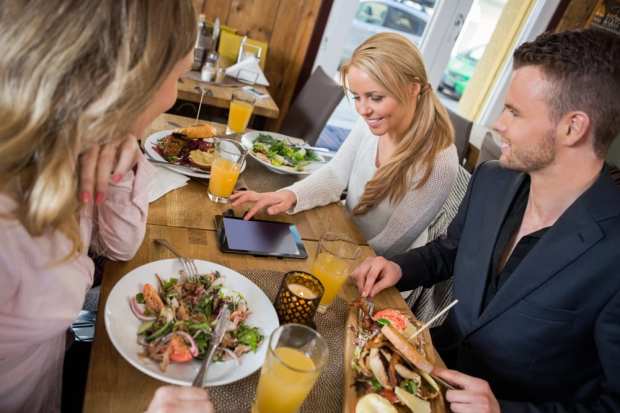Customer-Facing Technologies Spice Up The QSR Space

 Three words are driving dramatic technological changes in the fast food space: quality, convenience and speed. QSR customers expect quality food and their preferred payment methods, and they want those things immediately.
Three words are driving dramatic technological changes in the fast food space: quality, convenience and speed. QSR customers expect quality food and their preferred payment methods, and they want those things immediately.
Restaurant operators are doing their best to satisfy those demands, spending billions on sophisticated, innovative solutions that improve experiences for customers who are dining in or ordering delivery or pickup. High-tech solutions such as artificial intelligence (AI) and machine learning (ML) are being employed across all segments of the space with mostly positive effects, with 71 percent of diners saying they would be “amenable” to more AI in their restaurant experiences.
This month’s Deep Dive explores some of the most effective public-facing technologies that drive speed in the industry, particularly kiosks, which allow diners to customize, place and pay for orders without waiting in line. The global kiosk market is estimated to be worth $30.8 billion by 2024.
The Promise and Challenges of Implementing Kiosks
A report found that 29 percent of restaurant operators think they are lagging in adopting technology. Many of them blame prohibitive costs or doubt that adequate demand exists. Adopting these technologies does have its challenges: QSRs must pick the right vendor, integrate new technology properly into their legacy systems and attempt to upgrade without busting budgets. These are serious considerations, even for QSRs with deep pockets.
As an example, McDonald’s rolled out kiosks nationwide in 2015, and franchisees spent up to $750,000 to upgrade each store with the touch-screen systems. The rollout was hampered by one big oversight, however: The kiosks did not accept cash, alienating the 8.4 million U.S. households that do not have bank accounts, debit cards or credit cards. After a backlash, McDonald’s asked franchisees to retrofit their stores with cash-friendly kiosks. This misstep demonstrates that even well-meaning operators can suffer hiccups upgrading their systems when they disregard their customers, wittingly or unwittingly.
Kiosks Drive Sales, Deepen Customer Experience
A disconnect exists between consumers’ desired kiosk features and restaurant operators’ interests. Customers want options like touchscreens, LED menu boards and mobile payment methods, but operators are instead emphasizing back-end solutions such as POS systems.
Businesses generally see technology as a smart way to deepen their customer relationships, separate themselves from competitors and cut costs. Kiosks allow restaurants to showcase certain menu items to boost their sales, and a report notably found that the devices have proven to increase average check sizes. QSRs and fast-casual restaurants such as Dunkin’, Krispy Kreme and Shake Shack have all unveiled stores featuring touchscreen technologies.
Speed is the related benefit most valued by consumers, and kiosks are designed to decrease congestion. They automate the ordering process, which allows restaurant operators to fill orders more quickly and allocate workers to higher-value tasks. They can offer multiple payment options, spanning both cash and cards. Some systems recognize different languages, and 72 percent of QSR diners expect to be able to customize their orders — a strength of the technology. All of these features and realities can lead diners to spend 15 percent to 20 percent more on orders made at self-service kiosks.
Tableside Ordering Made Easy
Other effective public-facing technologies include tabletop or tableside tablets, which allow diners to place orders and pay without having to wait for paper bills. Tablets allow guests to set their own pace and sign up for loyalty programs. Digital signage can also educate consumers about menu items, possibly providing insights on ingredients.
The restaurant industry is currently behind others in terms of kiosks, such as airports and supermarkets, but QSRs are making up for lost time. Some small firms are even betting that just showing your face to order food will someday be as normal as swiping a card. PYMNTS highlighted the efforts of several small firms to commercialize facial recognition kiosks last year, including CaliBurger, Malibu Poke and UFood Grill. Facial recognition does have its safety concerns, however, as do other experimental technologies like driverless delivery cars.
Smart restaurant owners will nonetheless always remember that the business of serving food begins and ends with the customer. No matter how high-tech or fanciful solutions may become, human interaction will remain the key ingredient to success.
